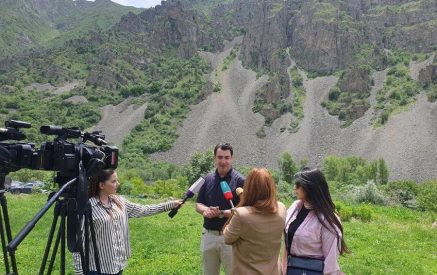How to live in a village with rich biodiversity where you face the challenge of wildlife conservation and rural development? Vayots Dzor is one of the regions with such rich biodiversity where encounters with wild animals are commonplace. Seeing a bear every day has become usual especially in Shatin. Bears wander into different parts of the village at any time of the day and after each of their “visits” farmers have to assess the damage caused by them. The residents have become more cautious; however, they know they need to conserve the nature and not cause any harm to animals even if they suffer some losses.
Over the years, Viva-MTS and the Foundation for the Preservation of Wildlife and Cultural Assets have conducted numerous projects aiming to reduce human-wildlife conflict. This is a relevant and important issue from the perspective of eco-village development as well. Attaching great importance to nature conservation and rural development, the partner organizations launched a project to introduce electric fences four years ago.
The need for such a solution in Vayots Dzor has long been proven: local farmers have suffered losses of both beehives and cattle in recent years due to bear attacks. Farms that have used solar-powered electric fences have avoided damage in subsequent years. They managed to protect crops from animals without harming them. These measures have proven to be the best approach to solving the problem.
Viva-MTS and the Foundation for the Preservation of Wildlife and Cultural Assets are going to provide another batch of electric fences to the communities. It will be an important support to farmers and will contribute to wildlife conservation. Modern solar-powered systems are beneficial for beekeepers who are constantly on the move throughout the year and farmers travelling to remote pastures. These systems are easily transportable, provide local work, allow for swift installation and dismantling.
Read also
Starting from 2019, the systems have been rolled out in 50 locations with a total of 475.000 square meters of fenced territory.
Electric fences operate at high voltage but low current (amperage). As a result, the animals are not physically harmed, but get a sense of discomfort and stay away from the fenced areas.






















































